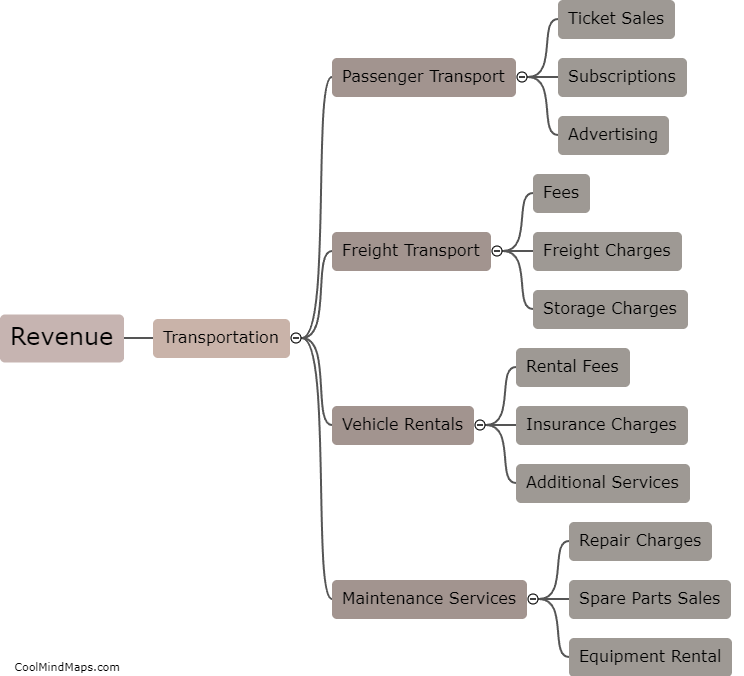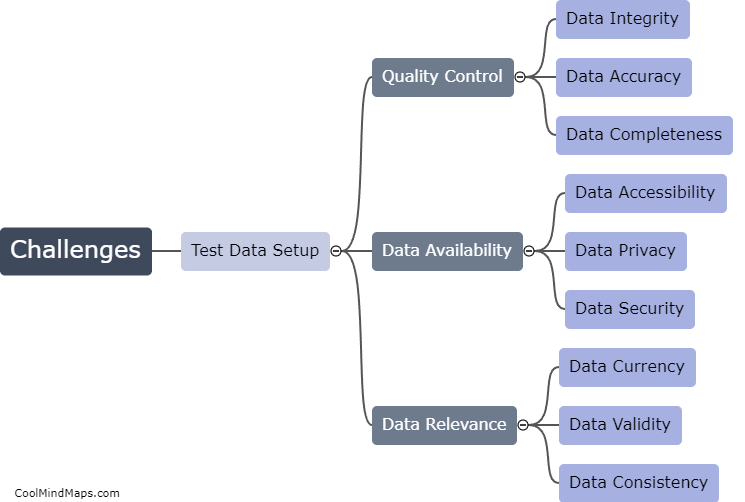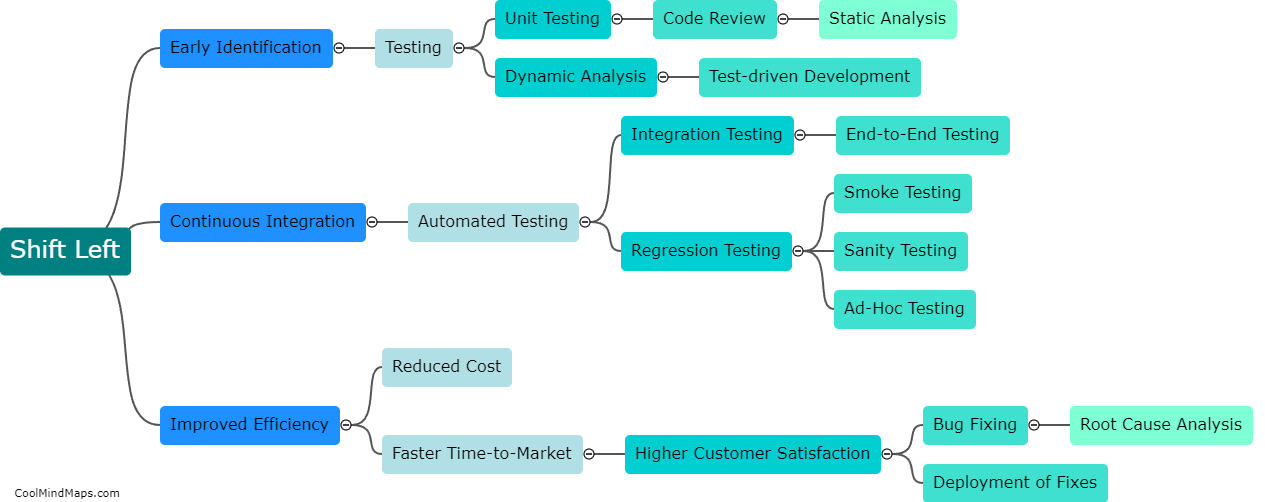What are the benefits of implementing shift left in testing?
Implementing shift left in testing refers to the practice of moving testing activities earlier in the software development lifecycle. This approach offers several benefits. Firstly, it allows for early detection and resolution of defects, minimizing the cost and effort of fixing issues at later stages. By identifying and addressing bugs earlier, shift left testing helps in improving overall software quality. Additionally, it promotes collaboration and communication between developers and testers, fostering a more cohesive and efficient development process. Shift left testing also enables faster feedback cycles, ensuring that any necessary adjustments or changes can be made promptly. Overall, implementing shift left in testing empowers teams to deliver high-quality software products with reduced time and cost.

This mind map was published on 31 July 2023 and has been viewed 115 times.











